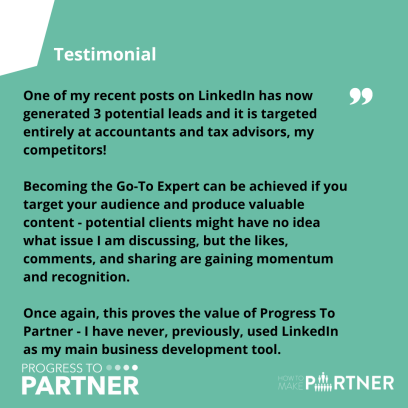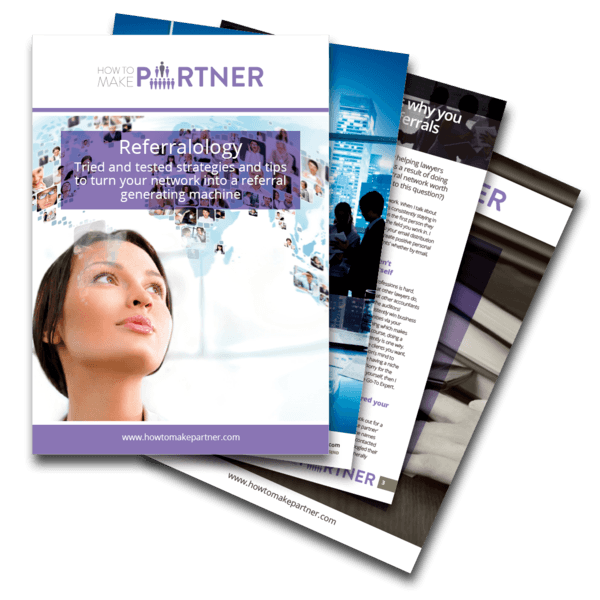LinkedIn has become the place for professionals to network, as it is the social media platform where people network for mainly business reasons.
It also has most of the decision makers you want to meet on it.
When those decision makers ‘Google’ your name, LinkedIn is usually the first place that they will find you. Although many people don’t consider LinkedIn to be at the top of their list when it comes to their social profile set up, let alone on our normal checklists, your LinkedIn profile, and your online presence, is now more important than you may realise.
Let’s be honest. It can be difficult to write about oneself, which is often why many people’s LinkedIn profiles are incomplete to the point in which you would never imagine your CV looking how some of these profiles look. And this is a big mistake. Nowadays, your LinkedIn profile truly is just as important as your CV. Today, I’ll show exactly what you need to pay attention to in order to craft an eye-catching, comprehensive, and engaging LinkedIn profile.
This article comes from a fragment of our Progress To Partner Virtual Masterclass “How to win work in only 30 minutes without leaving your house”. If you want to listen to the whole masterclass, join my Progress to Partner Academy.
The importance of having a good LinkedIn profile
,LinkedIn is an online space where professionals and decision-makers do their networking. When crafted purposefully, your strong LinkedIn profile can:
- Help you build rapport with the people you want to connect with.
- Show your potential viewers that you understand them and they can connect with you.
- Present you as relevant but also relatable.
- Clearly state the type of work that you do and who you work with i.e. your speciality, or a niche, and make it very clear. If you specialise in charities, or not-for-profits, you don’t want big corporates coming to you saying ‘can we talk about my audit?’, do you?
- Include a clear call to action.
- Feel like a good, interesting read, but should also make your audience feel as though they have gotten to know you a little bit after reading it.
Focus on the planning before you create your LinkedIn profile
1) Set your objectives for using LinkedIn
More often than not, we put off our LinkedIn profiles because we don’t want to take that step back to look at ourselves. It might seem like a rather philosophical question, but take the time to take a step back and ask yourself: ‘Why am I here? What’s the whole purpose of having a LinkedIn profile?’ I’ve noticed with many of my clients that there’s a hold up when it comes to crafting their LinkedIn profiles. Interestingly, it seems that the hesitation lies behind the fact that they haven’t had the time to ask themselves these questions, making it difficult for them to focus on the task at hand. But, if you want to get your profile completed, it can be helpful to set aside let’s say, 30 minutes a day, where you can set your objectives, and really focus on your actions.
2) Identify who you want your LinkedIn profile to speak to
What’s important here is mindset. To get into the right mindset to create a strong LinkedIn profile, it can be helpful to imagine that you are someone else reading your profile: ‘What do they want to see? What goes through their head when they (virtually) shake my hand for the first time?’ Of course, you won’t be able to successfully complete this task if you don’t have a clear niche. You must determine first, ‘who do I really want looking at my profile?’.
If you haven’t done this yet, join Progress to Partner Academy and go straight to Module 1 of The Go-To Expert Course. The desk-based research will help you clarify your speciality. In fact, one of our Progress to Partner members took the Go-To Expert course, and is frankly amazed at how easily he is picking up leads as a tax specialist from his usage of LinkedIn!

3) Cater your LinkedIn profile to your chosen niche
Let’s assume your target audience is company directors, lawyers, insolvency lawyers, and local accountants. When you begin crafting your profile, you want to take some time to think: ‘How am I going to connect with them? How am I going to make a connection request that they will want to accept, and what can I do to make them want to view, engage with my profile, and interact with my posts?’
Take a step forwards to working on your own career development and sign up to my weekly tips here and you’ll find out what you need to be working on in your career development (and how to make the time for your career development) to progress your career in your firm.
Just like if you were to connect with them at a local networking event, it’s incredibly important to be well connected with your local market and prepare your pitch for those interactions. Some important questions to keep in the back of your mind are also: ‘What would people I want to find on LinkedIn, put into search, to find someone like me?’ Remember, just as you are looking for people on LinkedIn, people may also be looking for you. At the end of the day, what matters is that the right people find you. Therefore, you need to make sure that your profile includes the search terms or keywords they’re using to look for someone like you. And then, once they’ve found you, that they find content that speaks to their needs and interests.
Read more about the ingredients for a referral to take place here. When crafting your LinkedIn profile, fight the natural impulse to disregard this initial planning process, and you’ll be able to purposefully influence the type of interactions you get and the people you interact with. Read:
- How to check that your LinkedIn profile is not negatively impacting the effectiveness of your business development activities
- 4 key ways to get more leads from LinkedIn (and how to do this consistently)
- The right (and wrong) way to stand out on LinkedIn and win work and find new opportunities
What makes for strong LinkedIn profiles
The first thing that you need to realise is that strong LinkedIn profiles derive from a previous and carefully executed planning process. So the good news is, if you’ve followed the steps above, you are already on the right track to creating a strong LinkedIn profile that helps you get the results. Now, before you actually start drafting this different section of your profile, take some time to reflect upon:
- What is the first impression you want people to get when they visit your profile for the first time?
- What should your employment history, your ways of thinking, your voice, and even your photo convey to them?
At this point, you must decide what you need to include in your profile in order to convey the impression that you’re wanting to get across. The best LinkedIn profiles are written in using a personal voice. For instance, if I just introduce myself as ‘Heather Townsend, an experienced executive coach for people in the professional services’, would you like to connect with me? I bet you wouldn’t. That can come off very dry to people. Instead, we need to create a story with structure, make it a good read, and use credibility statements that demonstrate the authority to do what you do. And, when writing, be sure to remove 80% of the ‘I’, and always write in the first person, rather than the typical third person that most bios are written in.
Now, if you’re still fairly junior in your career, how can you take the credibility of the team that you’re a part of to help boost up yours? You can do this by writing and creating your profile in your own voice. Finally, make your profile ‘human first, professional second.’ And instead of using the common buzzwords you find on most CV’s, such as ‘passionate, strategic, I have a track record, etc.’ bring your whole self into it.
Take a step forwards to working on your own career development and sign up to my weekly tips here and you’ll find out what you need to be working on in your career development (and how to make the time for your career development) to progress your career in your firm.
How to write a good professional headline and summary
You need to make sure that you have a professional headline, professional photo, and professional background cover that’s related to what you do. In fact, a background photo that relates to what you do for a living can be almost as important as your biography, and can really strengthen your brand.
- Giving clietns and members the clarity and confidence to grow their practice
- Guiding small/medium sized business owners through the maze of employment legislation | HR consultancy franchise owner
- Partner at haysmacintyre specialising in Financial Services

When you’re creating your professional headline , you have a maximum of 120 characters (unless you’re on Sales Navigator). And in those 120 characters, it can be difficult to fine tune exactly what you do, the value that you bring, and also, add important keywords on top of all of that. Be ready to do some tweaking until you nail the right headline. Therefore, if you want to make the best of those 120 characters, you need to have your objectives clear.
Again,‘What are you trying to do? What are you trying to show? What’s your credibility? Who needs to know what?’ Be prepared to update it if your objectives change. For instance, if you’re looking for a new job, you may want to use your job title as your headline to make it easier for recruiters to find you. These are the little things that are important to look out for.
The ‘About Section’ (aka Summary)
When it comes to your ‘About Section,’, you need to be sure to incorporate a hook, to get people to click into this section and then read it all the way through. When writing your About Section summary, a story approach often works well, especially when you incorporate your audience’s pain points. If you look at my current active profile, I’ve used a very story-based approach, and within it, I address pain points such as what your audience is trying to do and how you can help. For instance, let’s say you are an insolvency practitioner.
Your clients probably think ‘(Insert your name here) is the last person in business I ever want to talk to. If I ever have to contact him/her that means I did everything wrong and I’m the most stressful period ever in my life’. So, what should your LinkedIn profile make them feel? It should definitely convey a sense of help and a calming presence, essentially: ‘I’ll be there as a very calm voice, I will not judge you, in fact, I will give you very clear advice on your options.’
Purposefully create a strong Linkedin profile and see the impact in your online business development efforts.
Creating a strong LinkedIn profile is only part of the job. Along with your profile, you need to create good online content and interactions in order to actually become visible on LinkedIn. Nevertheless, a compelling profile that clearly addresses your niche’s pain points will set you up for success when trying to win work without leaving your home.
Want to have a physical guide you can use when creating your Linkedin profile? Get my FREE Guide to Creating a LinkedIn profile delivered straight to your inbox here.








